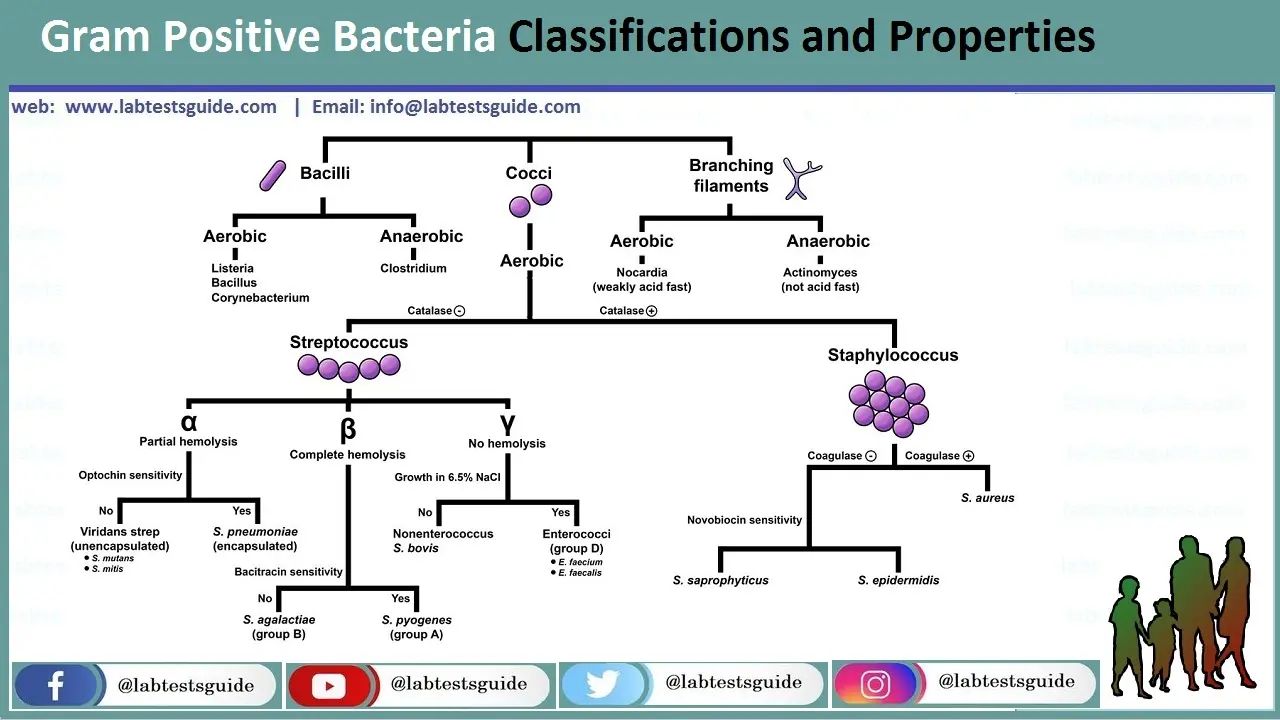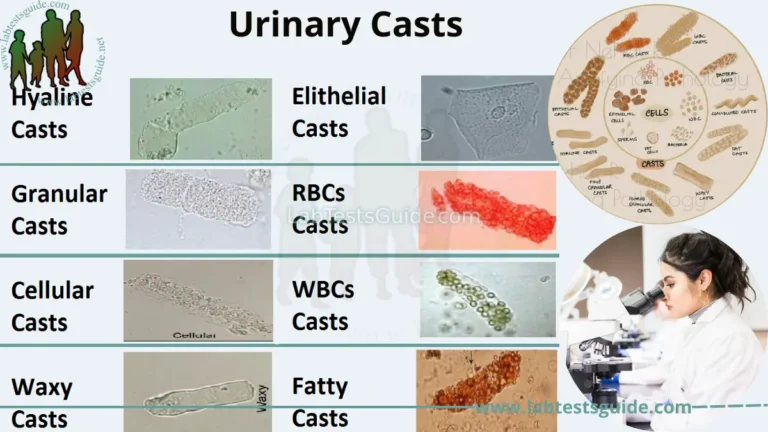Gram positive bacteria are the genus of bacteria family and a member of the phylum Firmicutes. These bacteria retain the colour of the crystal violet stain which is used during gram staining. These bacteria give a positive result in the Gram stain test by appearing purple coloured when examined under a microscope, hence named, gram-positive bacteria. Actinomyces, Clostridium, Mycobacterium, streptococci, staphylococci, and Nocardia are a few examples of gram-positive bacteria. Read (New Article)

Shapes:
Cocci:
- The bacteria that are oval or spherical in shape are included called cocci bacteria.
- These may either remain single or attached to one another in groups. They appear flattened when placed in groups.
- It is assumed that coccoid forms were derived from rod-shaped organisms through evolutionary time.
Bacilli:
- These are rod-shaped cells that also like cocci, remain either single or attached to other cells.
- Bacilli bacteria are among the first bacteria to have arisen, and this shape is said to be not as advantageous as other shapes. This has been assumed upon the observation of the behavior of filamentous E. coli cells which, though motile and chemotactic, move slowly and cannot tumble to change direction.
Spiral:
- This group includes bacteria that are either helical-shaped or curved (comma-shaped).
- The bacteria can range from slightly curved to corkscrew-like spiral.
Classifications:
- Cocci
- Bacilli
- Spiral
1. Cocci
- Staphylococcus (Catalase +)
- Staph aureus (Coagulase +)
- S. epidermidis (Coagulase – ) (Novobiocin sensitive)
- S. saprophyticus (Coagulase – ) (Novobiocin Resistant)
- Streptococcus (Catalase -)
- α-hemolytic (Partially Hemolysis) Green
- Pneumoniae [mutans, sanguis (optochin sensitive) bile soluble,capsule (quellung +)]
- Viridans [mutans, sanguis (optochin resistant)not bile soluble,no capsule]
- β-hemolytic (Complete Hemolysis)
- Pyogenes Group A, bacitracin sensitive
- Agalactiae Group B, Bacitracin resistant
- γ-hemolytic (No Hemolysis)
- Enterococcus [E. faecalis, E. faecium]
- α-hemolytic (Partially Hemolysis) Green
2. Bacilli
- Aerobic
- Corynebacterium
- Listeria
- Bacillus
- Anaerobic
- Clostridium
3. Spiral
- Aerobic
- Nocardia (Weak Acid Fast)
- Anaerobic
- Actinomysec (Not acid fast)
Characteristics:
These bacteria have very distinct features that characterize it and differentiates it from other types of bacteria. These include:
- They lack an outer membrane
- They have a thin layer of the cytoplasmic lipid layer.
- They have a thick peptidoglycan layer
- The peptidoglycan layer has a large quantity of teichoic acid and a thin lipid layer, made up of lipoteichoic acid which plays a major role in bacterial adherence.
- The peptidoglycan layer plays a key role in maintaining the rigidity of the cell wall by crosslinking by the assistance of the DD-transpeptidase.
- They also have a thin layer of periplasm, as compared to that in the Gram-negative bacteria.
- Some have a locomotive apparatus, a flagellum that has two basal bodies for support unlike gram-negative which has four basal bodies.
- Some have a strong capsule made up of polysaccharides.
Differences Between Gram Positive and Gram Negative Bacteria
Common Differences Between Gram Positive and Gram Negative Bacteria
| Character | Gram-Positive Bacteria | Gram-Negative Bacteria |
|---|---|---|
| Gram Reaction | Retain crystal violet dye and stain blue or purple on Gram’s staining. | Accept safranin afterdecolorization and stain pink or red on Gram’s staining. |
| Cell wall thickness | Thick (20-80 nm) | Thin (8-10 nm) |
| Peptidoglycan Layer | Thick (multilayered) | Thin (single-layered) |
| Rigidity and Elasticity | Rigid and less elastic | Less rigid and more elastic |
| Outer Membrane | Absent | Present |
| Variety of amino acid in cell wall | Few | Several |
| Aromatic and Sulfur-containing amino acid in cell wall | Absent | Present |
| Periplasmic Space | Absent | Present |
| Teichoic Acids | Mostly present | Absent |
| Porins | Absent | Present |
| Lipopolysaccharide (LPS) Content | Virtually None | High |
| Lipid and Lipoprotein Content | Low (acid-fast bacteria have lipids linked to peptidoglycan) | High (because of presence of outer membrane |
| Ratio of RNA:DNA | 8:1 | Almost 1 |
| Mesosomes | Quite Prominent | Less Prominent |
| Flagellar Structure | 2 rings in basal body | 4 rings in basal body |
| Magnetosomes | Usually absent. | Sometimes present. |
| Morphology | Usually cocci or spore forming rods (exception : Lactobacillus and Corynebacterium) | Usually non-spore forming rods (Exception : Neisseria) |
| Endospore formation | Some produce endospores during unfavorable conditions. | Usually not found to produce endospores. |
| Toxin Produced | Exotoxins | Endotoxins or Exotoxins |
| Pathogens | Few pathogenic bacteria belong to Gram positive group. | Most pathogens are Gram negative. |
| Nutritional Requirements | Relatively Complex | Relatively Simple |
| Resistance to Physical Disruption | High | Low |
| Cell Wall Disruption by Lysozyme | High | Low (requires pretreatment to destabilize outer membrane) |
| Susceptibility to Penicillin and Sulfonamide | High | Low |
| Susceptibility to Streptomycin, Chloramphenicol and Tetracycline | Low | High |
| Inhibition by Basic Dyes | High | Low |
| Susceptibility to Anionic Detergents | High | Low |
| Resistance to Sodium Azide | High | Low |
| Resistance to Drying | High | Low |
| Rendering | They can rendered Gram -ve by increasing acidity | They can rendered Gram +ve by increasing alkalinity |
| Examples | Staphylococcus Streptococcus Bacillus Clostridium Enterococcus | Escherichia Salmonella Klebsiella Proteus Helicobacter Pseudomonas |
Possible References Used






